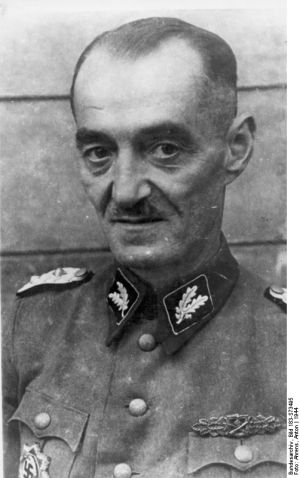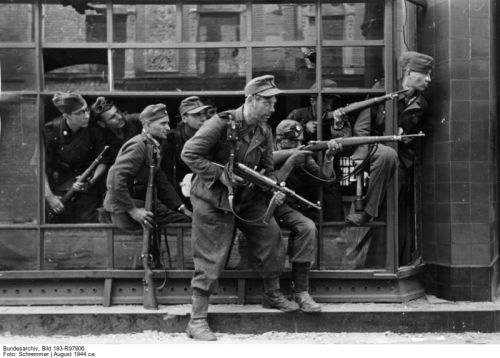Oskar Dirlewanger

Oskar Dirlewanger (Bundesarchiv)
Oskar Dirlewanger was born in Wurzburg on 26 September 1895.During World War One, he reached the rank of lieutenant and won the Iron Cross. Between 1919 and 1921 he was involved in the suppression of communist risings in the Ruhr and Saxony, also serving in the Freikorps in Upper Silesia. In 1922 he obtained a degree in political science and a year later joined the Nazi Party, and ran a knit-
By 1939 he had risen to the rank of SS-

Dirlewanger Troops - Warsaw Uprising 1944 (Bundesarchiv)
His unit was active in the suppression of the Polish uprising in Warsaw which commenced in August 1944. By the 5 August Dirlewanger had sixteen officers and 865 men in Warsaw. While the fighting was in progress the unit was expanded with 2,500 troops of which 1,900 came from the SS Prison Camp at Matzkau near Danzig. At the end of the uprising Dirlewanger had only 648 men left. On 5 August Dirlewanger SS barbarians advanced about 1,000 yards, in the Wola district of Warsaw. In every single street in Wola recaptured by the Germans, far behind the frontline, the inhabitants were ordered to leave their homes, induced by promises of evacuation. As soon as large groups of civilians assembled on the streets, they were not taken to evacuation points but were herded together in cemeteries, gardens, back yards, factory forecourts or squares, soldiers then fired machine gun bursts into the human mass until there were no further signs of movement On the 5 August no one was spared – everyone perished innocents, old men, women and children, as well as members of the Polish AK -
After Warsaw the Sonderkommando Dirlewanger saw further action in the Slovak national uprising in October 1944 where they again acted with their customary brutality. In May 1945 Dirlewanger’s men were taken into Soviet captivity but he fled westwards and was arrested in Altshausen, by the French Occupation forces. Dirlewanger died on 7 June 1945, after being recognised by Polish Prisoners of War, and beaten so hard, he died of a fractured skull.
SOURCES:
Robert S. Wistrich, Who’s Who in Nazi Germany, published by Routledge, London and New York 1995
Gunther Deschner, Warsaw Rising, published by Pan Ballantine, London
1972
Norman Davies, Rising ’44, published by Macmillan, 2003
Photographs – Bundesarchiv
© Holocaust Historical Society 2018

